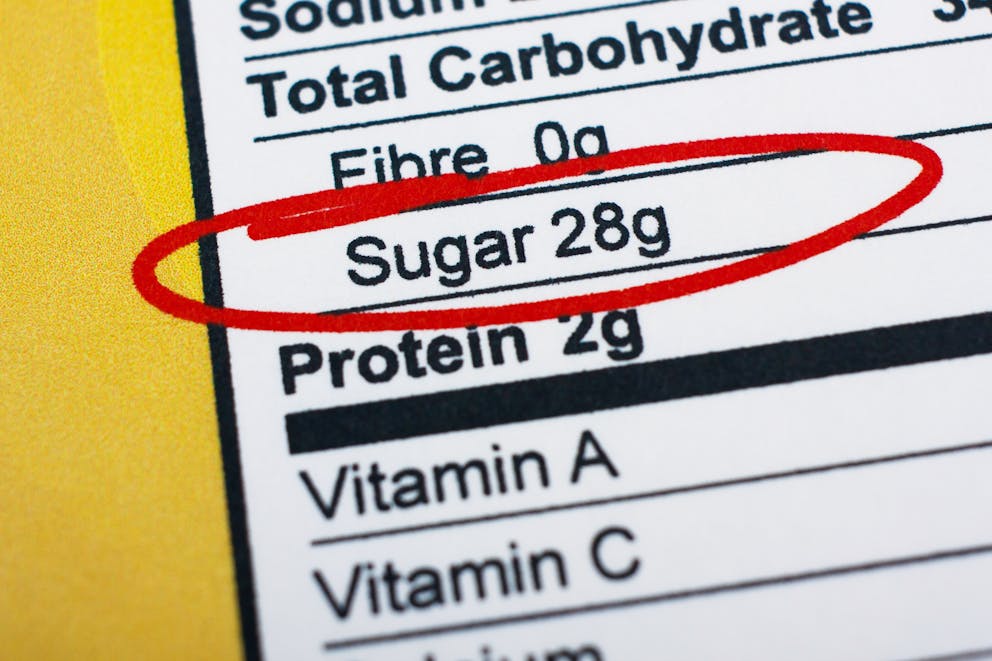The 2 Most Dangerous Foods
Imagine biting into a crisp apple. What if I told you that every apple could be a silent herald of the future? Yes, we're talking about GMO foods. The term itself sparks debates hotter than the summer sun in July.
But here's the twist: not all that glitters is gold, and not every GMO food carries a badge of controversy. Embark with me as we delve into the mysteries nestled within our kitchen cabinets and cooling units. We often think we know what lurks behind those doors.
Yet, do we? From sweet corn to the oil sizzling in your frying pan - these everyday heroes might have an extraordinary origin story. It's time to explore beyond labels and QR codes; it's time to question what "genetically modified" truly means for us, from farm to fork.
The United States stands as a titan in GMO production, while across the pond, the European Union takes cautious steps with stringent regulations. Amidst this global dance of acceptance and resistance lies an ocean of facts...and fiction.
Unveiling the Truth About GMOs
Let's get honest about GMOs. They're everywhere, from our morning toast to late-night snacks. But what exactly are they? And why does everyone seem to have an opinion on them?
What Are GMOs?
GMO stands for genetically modified organisms. It sounds like something out of a sci-fi movie, right? But it's pretty simple when you break it down.
Scientists tweak the genetic material of plants or animals to give them superpowers—okay, not really superpowers, but qualities like resistance to pests or tolerance to herbicides.
This isn't new stuff either; we've been playing around with genetics since Mendel started breeding peas in his garden. The goal here is straightforward: make crops that can survive more challenging conditions and produce more food.
Considering how fast our world's population is growing, this sounds like a good deal.
The Birth of "Bioengineered Ingredients"
So, where did the term "bioengineered ingredients" come from? It's the food industry's way of saying 'GMO' without actually saying it. Think about it as rebranding for the digital age.
The idea was sparked by the Food and Drug Administration's (FDA) push for more apparent labeling practices on products containing these genetically tweaked components.
So now, instead of seeing 'genetically modified,' you might spot 'bioengineered' on your cereal box—a nod towards transparency in what we eat.
This shift has stirred quite the pot among health-conscious and environmentalists alike, who argue whether tinkering with nature's code is safe—or ethical—for human consumption and our planet.
In summary, understanding GMOs boils down to knowing their origins and recognizing how bioengineering plays into today's agriculture game plan—it's all about ensuring enough food while trying not to be too hard on Mother Earth.
Decoding Labels and QR Codes
Gone are the days when a glance at a label gave you all the needed information. Each food item has a secret code—especially those bioengineered goodies. Let's crack that code together.

Understanding Food Labels
First off, navigating GMO labels can feel like decoding ancient hieroglyphs. It's not rocket science once you get the hang of it. The trick? Knowing what to look for.
Bioengineered (BE) foods: This tag means genetic engineering played a part in making this product.
The Non-GMO Project Butterfly: Spotting this logo? You're looking at something made without genetically modified organisms.
"USDA Organic": While not directly about GMOs, organic standards say no to these guys. Seeing this badge is pretty good assurance no GMO is lurking in your snack.
Companies must let us know if there's genetically engineered stuff in our snacks – but they have some leeway on how they do it.
The Role of QR Codes
A tiny square barcode might be your gateway to truth land. These nifty QR codes on the packaging aren't just for show; scan them with your smartphone, and boom, you're transported to a webpage spilling all the beans about what's inside your food.
But here's where things get spicy: Not everyone thinks scanning should be necessary to discover what's up with their grub. This sparks a pretty debate between convenience and transparency.
Yet, these codes serve as bridges connecting consumers directly to details manufacturers share regarding bioengineering involvement—whether we're talking soy flour or corn chips.
So next time you're puzzling over labels plastered with "genetically modified" or mysterious barcodes, thinking, "What am I eating?" remember: Those labels and codes are keys unlocking doors to informed choices.
Surprising GMO Foods You Might Be Eating
Do you think you know what's on your plate? Think again. Many of us chow down on foods daily without realizing they're genetically modified (GM). Let's pull back the curtain and show you some common culprits.
Yellow Squash and Green Zucchini
Yep, these summer staples. Modified to fight off viruses that could wipe out entire crops, yellow squash, and green zucchini are more resilient thanks to genetic engineering. But when was the last time this came up at a barbecue?
Beets and Papaya
Beets: Sugar beets, to be exact. A whopping 95% of sugar beets in the US are GM to resist herbicides.
Papaya: Ever heard of the Rainbow papaya? To combat the ringspot virus, researchers engineered a variety of papaya known as "Rainbow." Most papayas from Hawaii have been genetically modified for this reason.
Eggplant and Certain Apples
Sneaky yet true: some eggplants now carry a gene that fights pests, making them less reliant on chemical pesticides. And those apples that don't brown as quickly when sliced? Science did that, too—to make them more appealing.
Farm-Raised Salmon
This one's big—literally. Some farm-raised salmon have been tweaked with growth hormones to reach market size faster than their wild cousins ever could. Here's where it gets fishy.
Controversy simmers over the potential nutritional or health repercussions of genetically modifying organisms. We're not just talking veggies or fruits here; even our seafood platter isn't spared from genetic tinkering.
With advances moving fast in biotech fields, the New York Times reports, we've got plenty more food for thought—or should I say "food for tech?" Stay curious about what lands on your plate.
The Challenge with Highly Processed Foods
Have you ever tried deciphering what's in your favorite bag of chips or that go-to frozen dinner? Decoding the ingredients in those beloved processed meals feels akin to unraveling ancient hieroglyphs.
The labels? A labyrinth. And when it comes to spotting bioengineered ingredients, well, good luck.
Processed foods are the magicians of the grocery store - masters at hiding their tricks. They transform so drastically from their original form that identifying genetically modified organisms (GMOs) within them becomes a Herculean task.
Understanding Food Labels
You think you've figured it all out until you hit the snack aisle. Here lies the ultimate test: food labels cluttered with terms like 'genetically engineered' or 'bioengineered.'
But here's a secret - these words often camouflage themselves among other ingredients, making our quest no less than finding a needle in a haystack.
The Role of QR Codes
And then there are QR codes—those little black-and-white squares promising transparency but feeling more like another hoop to jump through. Companies use QR codes to disclose information on bioengineered goodies tucked inside products.
So yes, we're supposed to whip out our phones in aisle 5 and get sleuthing. Making health-conscious choices amidst this confusion feels almost as challenging as opting for a salad at an all-you-can-eat buffet—doable but oh-so-tough without some severe willpower and know-how.
In essence, navigating this maze requires patience and persistence because, let's face it, we deserve better than guessing games regarding what lands on our plates.
Opting for Organic and Non-GMO Alternatives
Let's get honest about what we're putting on our plates. With all the buzz around genetically modified (GM) foods, it's no wonder many of us are turning to organic and non-GMO alternatives.
But why make the switch? What's more, how can one discern whether a product genuinely lacks genetically modified components?
Benefits of Choosing Organic
The perks of going organic reach far beyond just avoiding GMOs. Here's the scoop:
Better for your health: Organic foods often contain higher nutrients and antioxidants.
Eco-friendly: They support sustainable farming practices that help protect water quality and biodiversity.
No nasty chemicals: You'll dodge pesticides, synthetic fertilizers, and other harmful substances used in conventional farming.
Those are pretty good reasons to go green with your groceries, right?

Finding Non-GMO Products
Sifting through labels to find non-GM products might seem like looking for a needle in a haystack. But fear not. Here are some tips to make shopping easier:
You're golden if it says "USDA Organic" or bears the Non-GMO Project Verified seal. Holding one of these labels, you have a promise that what's inside adheres to rigorous benchmarks.
Strolling through the market or gliding down grocery store lanes becomes less of a guessing game and more of an informed journey, thanks to these seals. And remember: The choice is yours.
Remember, "You are what you eat." So, choosing organic over processed food isn't just good; it's investing in your future self.
GMOs and Keto Food choices
When it comes to making keto food choices, considering the impact of GMOs (genetically modified organisms) is essential for those following a ketogenic diet.
Many traditional waffle recipes contain flour and sugar, often derived from genetically modified crops such as wheat and corn.
However, with keto waffles recipes, you can opt for non-GMO alternatives like almond flour or coconut flour, which are naturally low in carbs and suitable for a ketogenic lifestyle.
Using these alternative ingredients, you can enjoy delicious waffles without compromising your commitment to avoiding GMOs.
Additionally, incorporating wholesome, non-GMO ingredients into your keto waffle recipes ensures that you're making nutritious choices that support your health and well-being while staying in ketosis.
Conclusion
So, there you have it. We've peeled back the layers of our daily bread - quite literally - to reveal a world where science and supper sit at the same table.
GMOs aren't just a label or a distant concept debated in academic circles; they're part of our everyday lives, hidden in plain sight from yellow squash to your morning slice of apple.
The truth? It's complex. Yet, within this intricate maze of biology and botany, there is a chance for decision-making, enlightenment, and insight.
From decoding QR codes like modern-day treasure hunters to choosing organic more enthusiastically than ever, we're learning to navigate this bioengineered landscape one bite at a time.
And let's not forget: while debates rage on about GMOs' place in our future foodscapes, their story is also ours. It is a tale of innovation, caution, progress, and respect for nature's intricate designs.
Embarking on this exploration from our kitchens to expansive fields touches not only upon the food that ends up in our meals but also emphasizes how mindful decisions can steer entire sectors, mold policies, and potentially lead us down a path of more eco-friendly habits.
We started biting into an apple, and now we stand at the crossroads of technology and tradition with our eyes wide open. It's been quite the adventure discovering that behind every meal lies stories worth telling...and questioning.
The narrative around GMOs continues evolving, and so should our curiosity and engagement with what feeds us.
Previous blog
The Biggest Weight Loss MistakeNext blog
The 3 Hormones That Ruin Your Body TypeTags

Popular
08/31/2023
11.6K views
08/31/2023
14.6K views
08/31/2023
145.6K views
03/18/2024
11/21/2022




